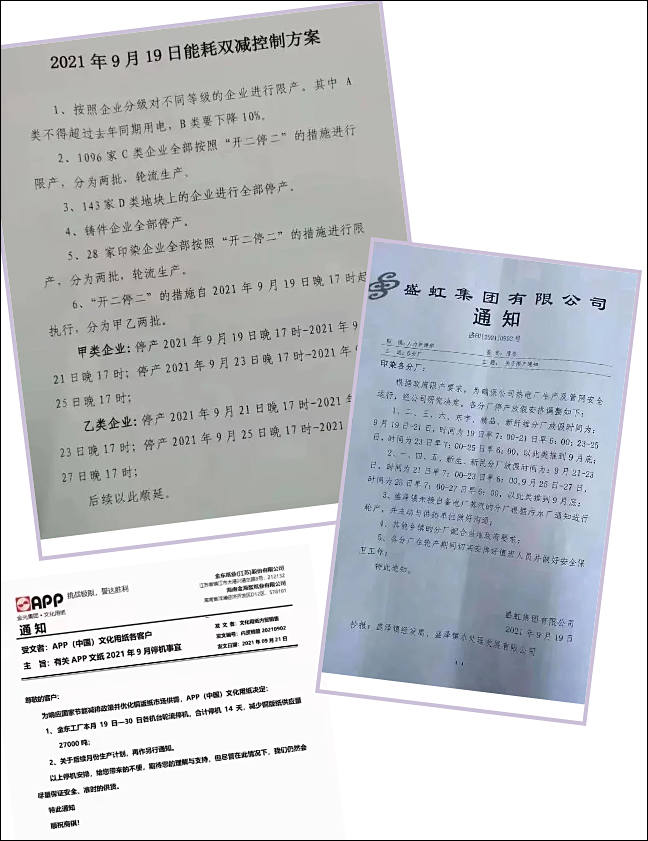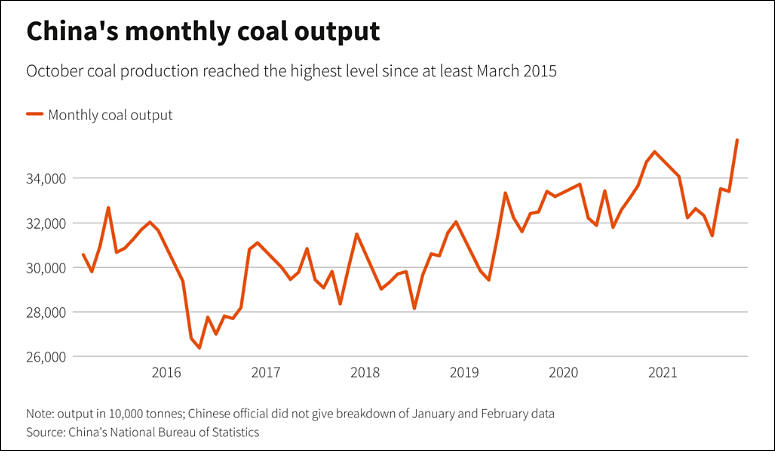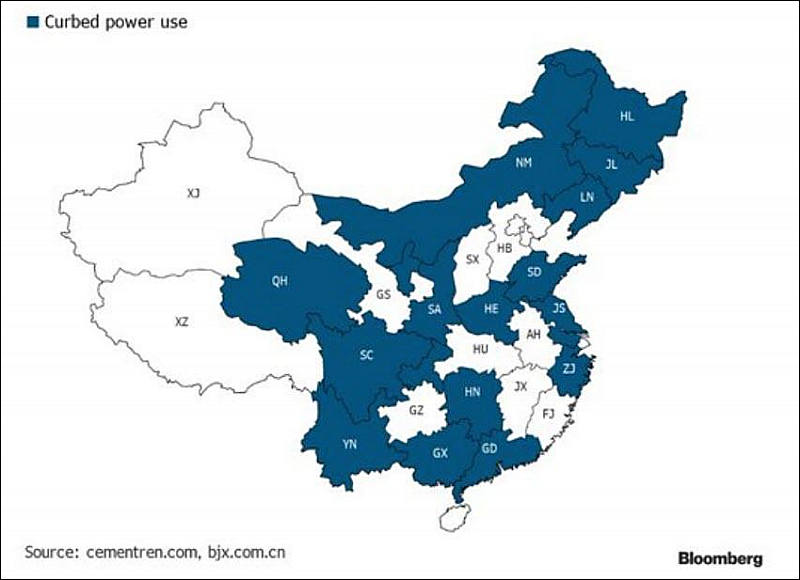
-

This week, several Chinese suppliers immediately notified of delays in deliveries and the inability to name exact production dates. The reason is the strong restrictions on the operation of factories due to electricity savings. Workers are forcibly sent home for a long fall break, and are not sure they can return.
This year, the cost of delivery from China has increased several times, there is still a shortage of containers for transportation, the prices for components and materials for production have risen. But the fall brought new surprises: now, in key industrial regions, they began to restrict the work of factories.
In the next 15 days, industrial China "stands".
The work restriction affected large industrial cities in Guangdong province such as Guangzhou, Dongguan, Zhongshan, Huizhou, Foshan and others. A number of factories are recommended to work only two days a week, and five - to be idle. Small businesses are generally allowed to work no more than one day a week.
In some provinces, compulsory holidays of 7 to 14 days have been established.
The purpose of such measures is to ensure no more than 15% of the load on the network, especially during the period of peak consumption from 7:00 to 23:00. Violators of the energy-saving regime were promised to be forcibly turned off for 10 days and to impose fines.
In Jiangsu province, many factories were ordered to suspend work for 15 days (for a total of 22 days, taking into account national holidays in the first week of October). In the city of Nantong, manufacturing companies went to rest for 17 days (for a total of 24 days), in Taizhou (Zhejiang province), most companies were sent to rest from September 16 to the end of the month (followed by another week of weekend).
Office workers also have a hard time: in the south of China, where to this day the air temperature is about 30 degrees, it is forbidden to turn on air conditioners in a number of offices and business centers. Therefore, the clerks, as in the old days, open the windows and turn on the fans. Jiangsu Province has 50% limited street lighting at night.
China has decided to restrict production in connection with the "explosive" rise in prices for natural gas and coal, and other sources of energy.
More info in Chinese - https://mp.weixin.qq.com/s/L6H_CaMGOm5X_HSz_IzlUA
-
Add this to the picture
"We have never experienced such a radical change in the external environment," Sunac’s Shaoxing office said, pointing to a 60% year-on-year fall in home sales over the summer.
Without stopping home sales China energy issues cold be much worse.
-
Municipal authorities in several regions of China began to urgently cut off the power supply to industrial enterprises from Sunday until the end of the month, wishing to reduce the detrimental impact of local energy on the environment. Companies operating in these areas said that if such measures continue in October, then the entire fall season of electronics sales will be thwarted. Many companies have been asked to limit their energy consumption by the end of the month, reducing it by 10 or 30% from the usual level.
-
Taiwan-based PCB makers with manufacturing plants in Suzhou and Kunshan, China have been required to suspend production at their local fabs September 26-30 due to government-led power cuts, according to industry sources.
-
The real reason for this is the lack of coal
Over the current year, energy consumption in China has grown by 14%, while coal production has grown by only 6%. In addition, the heating season begins in the country, which further increases the demand for coal. Therefore, even if the government lifts the restrictive measures, electricity will still be in short supply.
Chinese manufacturers warn that stringent energy-saving measures will reduce production in the three largest manufacturing centers - Jiangsu, Zhejiang and Guangdong provinces. Together, they account for almost a third of the country's gross domestic product.
Some contract electronics manufacturers have already suspended or significantly reduced their production volumes. Also, the production, providing services for packaging and testing of microcircuits, were forced to temporarily stop the activity. We are talking, among other things, about the partners of the leaders of the semiconductor market: Intel, NVIDIA and Qualcomm.
One of the largest PCB manufacturers, Unimicron Technology, said its subsidiaries in Suzhou and Kunshan in Jiangsu province need to stop production from September 26 at least until the end of the month.
Measures to reduce electricity consumption are reported by Pegatron, which is one of Apple's partners and a large contract manufacturer of electronic and computer devices. The company noted that it is forced to prioritize energy conservation in line with local government policy. Apple's contract builders have so far avoided drastic cuts in production, according to sources familiar with the situation, but now the restrictions are affecting them too.
-
According to a notice from National Development and Reform Commission (NDRC), electricity prices generated by coal-fired plants will be permitted to rise and fall by 20%. That compares with the prior upside limit of 10% and the lower limit of 15%. The reform would take effect from Oct. 15
It is just nice way to spread issues across all sectors of economy.
-
Supply chains are moving to cope with China's power reductions in one way or another, with the prospect the restrictions may become a long-term policy and will inevitably drive up production costs, according to industry sources.
-
Solution:
China's October coal output rose to the highest since at least March 2015, after Beijing approved a raft of coal mine expansions to tame record prices and boost supply.
The world's biggest producer and consumer of the dirty fossil fuel churned out 357.09 million tonnes of coal last month, up from 334.1 million tonnes in September, data from the National Bureau of Statistics showed on Monday.
Output over the first 10 months of 2021 was 3.3 billion tonnes, up 4% year-on-year.
Since July, China has approved expansions at more than 153 coal mines, which could add 55 million tonnes of coal output in the fourth quarter, the National Development and Reform Commission (NDRC) said last month.


 sa18773.jpg775 x 451 - 44K
sa18773.jpg775 x 451 - 44K -
The country's chief economic planner announced further regulation of coal prices "following the recent abnormal increase in coal prices." The National Development and Reform Commission (NDRC) said yesterday that it had summoned key miners for consultations on improving the coal pricing mechanism.
“Following the recent abnormal increase in coal prices, it is time to improve the coal pricing mechanism,” the NDRC said in a statement, adding that all market participants have reached a consensus on a reasonable range of coal prices.
But he did not disclose any details about the price level. Since late October, the NDRC has organized several meetings with coal miners and distributors, as well as energy companies and legal experts, to set target coal prices.
Some "miners" in the leading mining regions, Shanxi, Inner Mongolia and Shaanxi, have set prices at 900 yuan ($ 129) per tonne for 5,500 kilocalories.
In the meantime, the government has instructed to increase production and capacity of power plants to build up stocks as the winter heating season begins in northern China. Coal stocks at China's power plants continue to grow rapidly and could reach record highs by the end of this month, which will securely secure the country's energy supply in winter and spring, the NDRC said last week.
Coal reserves at power plants across China reached 147 million tons last week, according to the NDRC. Coal supplies for energy use have surged since October, up more than 30 percent from the same period last year, according to the NDRC.
Since mid-November, the country's average daily coal supply has reached 8.6 million tons, with the maximum volume reaching an all-time high of 9.43 million tons per day, despite an increase in coal consumption, the NDRC said.
According to the NDRC, daily coal supplies during this period exceeded consumption by almost 2 million tons.
http://szdaily.sznews.com/PC/layout/202111/30/node_10.html#content_1132059
Howdy, Stranger!
It looks like you're new here. If you want to get involved, click one of these buttons!
Categories
- Topics List23,979
- Blog5,724
- General and News1,353
- Hacks and Patches1,153
- ↳ Top Settings33
- ↳ Beginners255
- ↳ Archives402
- ↳ Hacks News and Development56
- Cameras2,362
- ↳ Panasonic991
- ↳ Canon118
- ↳ Sony156
- ↳ Nikon96
- ↳ Pentax and Samsung70
- ↳ Olympus and Fujifilm100
- ↳ Compacts and Camcorders300
- ↳ Smartphones for video97
- ↳ Pro Video Cameras191
- ↳ BlackMagic and other raw cameras116
- Skill1,961
- ↳ Business and distribution66
- ↳ Preparation, scripts and legal38
- ↳ Art149
- ↳ Import, Convert, Exporting291
- ↳ Editors191
- ↳ Effects and stunts115
- ↳ Color grading197
- ↳ Sound and Music280
- ↳ Lighting96
- ↳ Software and storage tips267
- Gear5,414
- ↳ Filters, Adapters, Matte boxes344
- ↳ Lenses1,579
- ↳ Follow focus and gears93
- ↳ Sound498
- ↳ Lighting gear314
- ↳ Camera movement230
- ↳ Gimbals and copters302
- ↳ Rigs and related stuff272
- ↳ Power solutions83
- ↳ Monitors and viewfinders339
- ↳ Tripods and fluid heads139
- ↳ Storage286
- ↳ Computers and studio gear560
- ↳ VR and 3D248
- Showcase1,859
- Marketplace2,834
- Offtopic1,319






